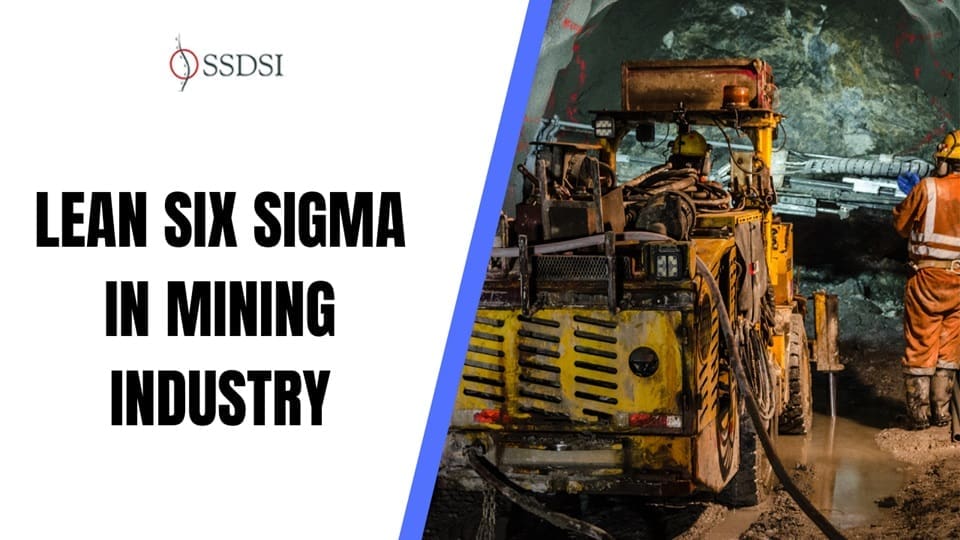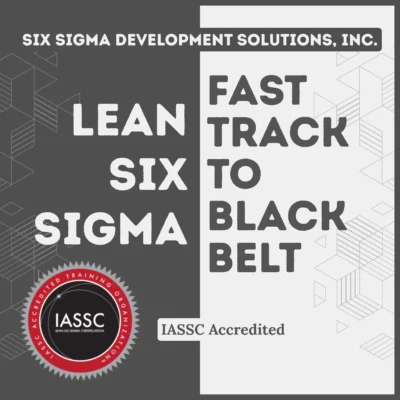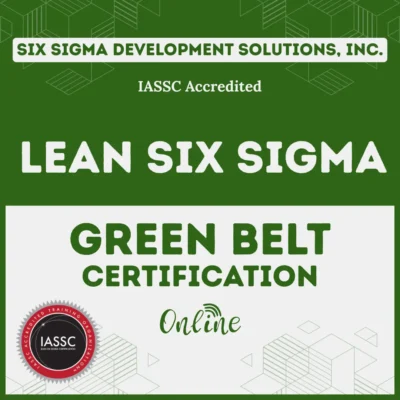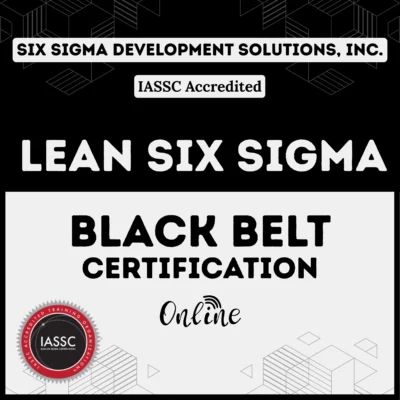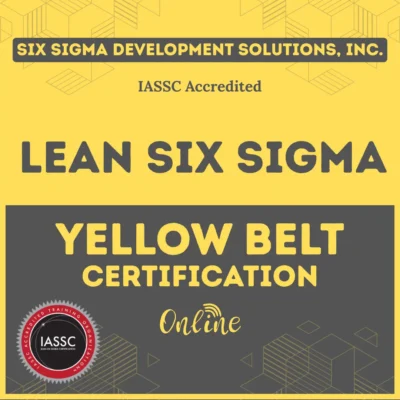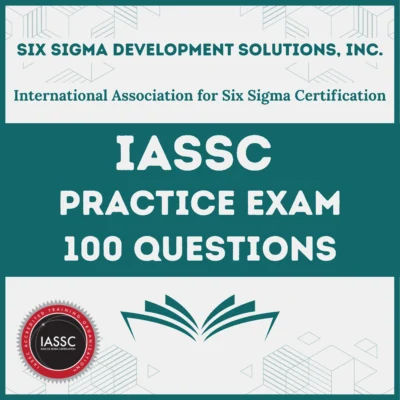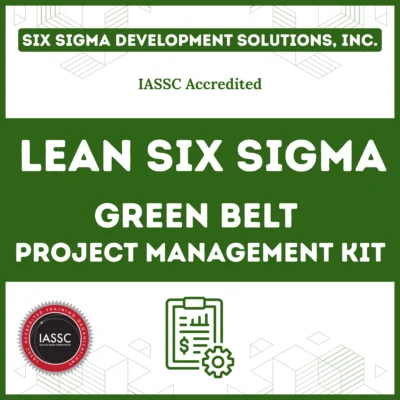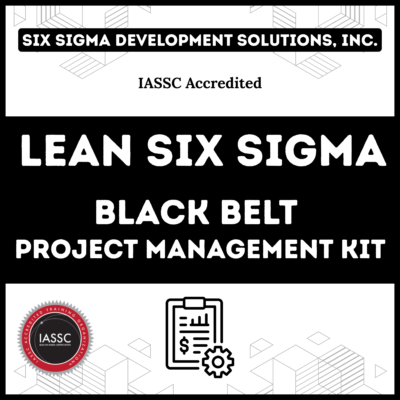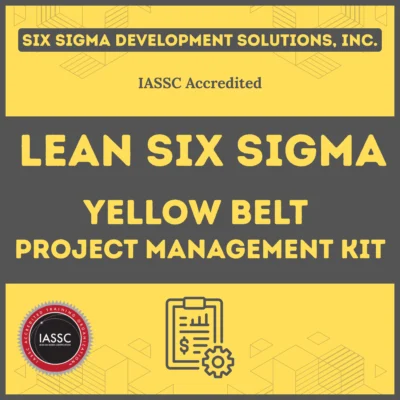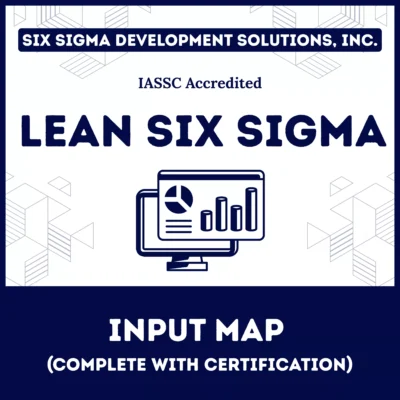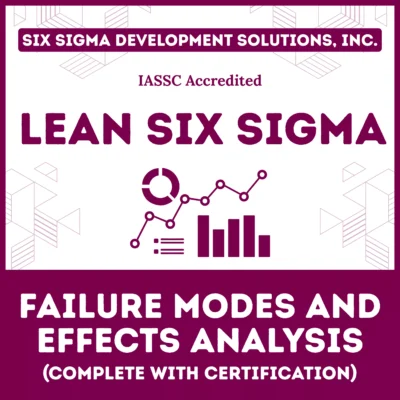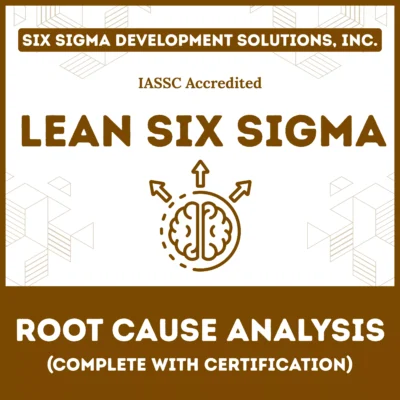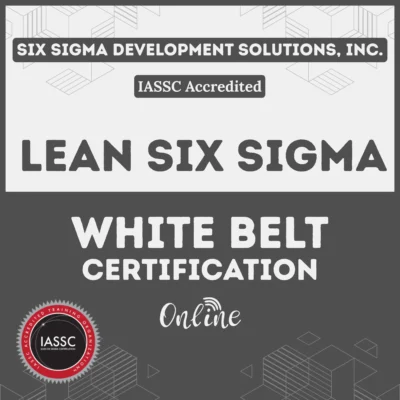The mining industry is a tough arena. It’s a world of heavy machinery, unpredictable commodity prices, and complex operations deep beneath the earth or sprawling across open pits. Yet, amidst these challenges, companies are turning to Lean Six Sigma to transform their processes, slash waste, and drive profitability.
This powerful methodology, blending Lean’s waste-cutting focus with Six Sigma’s precision, is revolutionizing how mining operations function. Let’s dive into how Lean Six Sigma is reshaping the mining landscape and why it’s a game-changer for operational excellence.
Table of contents
What is Lean Six Sigma?
Lean Six Sigma combines two powerhouse methodologies: Lean, which originated in Toyota’s manufacturing system to eliminate waste, and Six Sigma, developed by Motorola to reduce process variation.
Together, they create a robust framework for improving efficiency, quality, and consistency. In the mining industry, where margins are tight and external factors like geological conditions or market volatility loom large, Lean Six Sigma offers a structured path to streamline operations and enhance value.
The methodology hinges on the DMAIC cycle—Define, Measure, Analyze, Improve, and Control. This systematic approach helps mining companies identify inefficiencies, measure performance, pinpoint root causes, implement solutions, and sustain improvements.
By focusing on what adds value to the customer and cutting what doesn’t, Lean Six Sigma aligns perfectly with the mining sector’s need for cost reduction and operational agility.
Public, Onsite, Virtual, and Online Six Sigma Certification Training!
- We are accredited by the IASSC.
- Live Public Training at 52 Sites.
- Live Virtual Training.
- Onsite Training (at your organization).
- Interactive Online (self-paced) training,
Lean Six Sigma Fundamentals in Mining Context
Lean Six Sigma represents the strategic fusion of two proven methodologies tailored specifically for mining operations. While Lean focuses on eliminating waste and optimizing workflow, Six Sigma concentrates on reducing process variation and defects through statistical analysis. Together, they create a comprehensive approach that addresses mining’s unique challenges.
The mining sector faces distinctive operational hurdles including equipment downtime, material handling inefficiencies, safety concerns, and environmental compliance requirements. Traditional improvement approaches often fall short because they address symptoms rather than root causes.
Consequently, Lean Six Sigma provides the analytical framework necessary to identify, measure, and eliminate these underlying issues systematically.
Furthermore, the methodology’s emphasis on data-driven decision making aligns perfectly with modern mining’s increasing digitization. Smart sensors, IoT devices, and advanced analytics generate vast amounts of operational data that Lean Six Sigma practitioners can leverage for continuous improvement initiatives.
Also Read: Hazard and Operability Study (HAZOP)
Why Lean Six Sigma Matters in Mining?
Mining is unlike any other industry. It’s not a controlled factory floor where variables are easily managed. Instead, it’s a dynamic environment shaped by geological uncertainties, equipment reliability, and safety demands. So, why is Lean Six Sigma gaining traction here?
Tackling Industry Challenges
The mining sector faces relentless pressure. Fluctuating commodity prices can turn profits into losses overnight. Environmental regulations demand sustainable practices, while safety concerns require rigorous protocols. Additionally, the complexity of operations—from drilling to haulage to processing—creates ample room for inefficiencies.
Lean Six Sigma steps in as a beacon of clarity, offering tools to reduce costs, boost equipment effectiveness, and enhance safety without compromising output.
For instance, high commodity prices often lead to overproduction, inflating costs. When prices drop, companies resort to layoffs or shutdowns. Lean Six Sigma helps stabilize operations by minimizing waste and optimizing processes, ensuring profitability regardless of market swings.
Driving Operational Excellence
Operational excellence is the holy grail for mining companies. Lean Six Sigma achieves this by targeting Overall Equipment Effectiveness (OEE), a key metric for productivity. By improving equipment uptime, performance, and quality, companies can maximize output while minimizing downtime. For example, a case study at BHP Billiton’s EKATI mine showed a Lean Six Sigma deployment that reduced maintenance delays by 37%, proving its impact on real-world operations.
Moreover, Lean Six Sigma fosters a culture of continuous improvement. Through regular kaizen events and employee training, mining firms empower their workforce to identify and solve problems, creating a ripple effect of efficiency across the organization.
Lean Principles in Mining Operations
Lean methodology identifies eight types of waste commonly found in mining operations: overproduction, waiting, transportation, over-processing, inventory excess, motion waste, defects, and underutilized talent. Each category presents significant opportunities for improvement within mining contexts.
Transportation waste manifests prominently in mining through inefficient hauling routes, suboptimal fleet utilization, and unnecessary material movement. By applying Lean principles, mining companies can redesign logistics networks, implement dynamic routing systems, and reduce fuel consumption while improving productivity.
Similarly, equipment downtime represents a critical form of waiting waste in mining operations. Unplanned maintenance shutdowns can cost thousands of dollars per hour, making predictive maintenance strategies essential. Lean approaches emphasize proactive maintenance scheduling, rapid changeover techniques, and standardized work procedures to minimize downtime.
Motion waste occurs when workers perform unnecessary movements due to poor workplace organization or inadequate tool placement. The Lean principle of workplace organization (5S methodology) helps create efficient work environments that reduce fatigue, improve safety, and enhance productivity.
How Lean Six Sigma Works in Mining?

Let’s break down how Lean Six Sigma’s DMAIC framework applies to mining, with practical examples to illustrate its transformative power.
Define: Pinpointing the Problem
The first step is defining the issue. In mining, this could be excessive equipment downtime, high fuel consumption in haulage, or delays in ore processing. For example, a coal mining company might notice trucks taking too long to complete hauling cycles, impacting productivity. By clearly defining the problem—say, “reduce hauling cycle time by 20%”—the team sets a measurable goal.
Measure: Gathering Data
Next, companies collect data to understand the current state. In the hauling example, this might involve tracking truck cycle times, fuel usage, and wait times at loading points. Tools like time studies or process mapping help quantify inefficiencies. In one case, a mining company used Pareto charts to identify that 65% of delays stemmed from specific bottlenecks, providing a clear focus for improvement.
Analyze: Finding Root Causes
Analysis digs into why problems occur. Techniques like fishbone diagrams or 5 Whys help uncover root causes. For instance, the hauling delays might trace back to poor scheduling or equipment mismatches. In a Sterlite Industries case, a 5 Whys analysis revealed inefficiencies in their Cenvat availment process, leading to targeted solutions that saved Rs 8.40 crore annually.
Improve: Implementing Solutions
This phase is about action. Solutions might include automating scheduling systems, optimizing truck routes, or introducing predictive maintenance. Rio Tinto, a global mining leader, used Lean Six Sigma to streamline its Integrated Production and Technology (IPT) program, boosting productivity across its operations. By testing solutions on a small scale, companies can refine them before full rollout.
Control: Sustaining Gains
Finally, the control phase ensures improvements stick. This involves setting up monitoring systems, like KPIs for truck utilization, and regular audits. Process mining, a data-driven tool, can enhance this phase by tracking performance in real-time, alerting managers to deviations. For example, a mining firm might use process mining to ensure hauling times remain within target ranges, preventing backslides.
Real-World Success Stories
Lean Six Sigma isn’t just theory—it delivers results. Let’s explore some compelling examples from the mining industry.
Rio Tinto’s Cost-Cutting Triumph
Rio Tinto implemented its IPT program, blending Lean and Six Sigma principles, to tackle inefficiencies across its global operations. By focusing on waste elimination and process optimization, the company achieved significant cost reductions while boosting productivity. This program, launched in 2010, demonstrates how Lean Six Sigma can scale across large, complex mining operations.
BHP Billiton’s EKATI Mine
At BHP Billiton’s EKATI mine, a Lean Six Sigma initiative targeted equipment maintenance delays. Using DMAIC, the team identified root causes, implemented new maintenance protocols, and reduced delays by 37%. This not only improved OEE but also enhanced worker safety by minimizing unplanned downtime.
Ervei Khuder Iron Mine
In Mongolia, the Ervei Khuder Iron Mine applied both DMAIC and Design for Six Sigma (DFSS) to optimize production and design a new facility. The result? A 35% increase in vehicle effectiveness and a 17% boost in productivity, showcasing Lean Six Sigma’s versatility in addressing both existing and new processes.
Also Read: 8 Pillars of Total Productive Maintenance (TPM)
Challenges of Implementing Lean Six Sigma in Mining
While the benefits are clear, applying Lean Six Sigma in mining isn’t without hurdles. The industry’s unique complexities demand tailored approaches.
Operational Complexity
Unlike manufacturing, mining operations face uncontrollable variables like geological conditions or weather. These factors make standardizing processes tricky. For example, implementing 5S (Sort, Set in order, Shine, Standardize, Sustain) is straightforward in a factory but challenging in a dusty, unpredictable mine site.
Safety and Regulatory Constraints
Mining is a high-risk industry with stringent safety regulations. Changes to processes must prioritize worker safety, which can slow implementation. Lean Six Sigma projects must balance efficiency with compliance, ensuring no corners are cut.
Data Availability
Lean Six Sigma relies on data, but collecting accurate data in underground mines or remote sites can be tough. For instance, tracking equipment performance in real-time may require advanced sensors, which some operations lack. Process mining tools can bridge this gap by extracting insights from existing systems.
Cultural Resistance
Mining companies often have entrenched cultures resistant to change. Convincing workers to adopt new methods requires strong leadership and continuous training. Kaizen events and employee empowerment are critical to overcoming this barrier.
Strategies for Successful Implementation
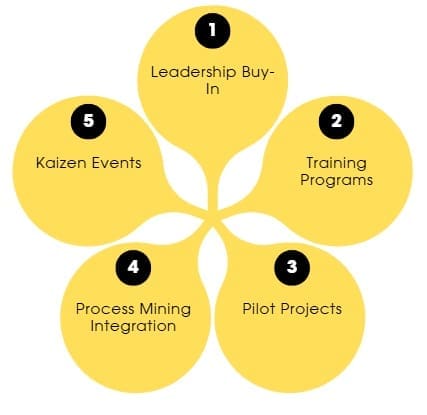
To navigate these challenges, mining companies can adopt proven strategies:
- Leadership Buy-In: Secure commitment from top management to drive cultural change.
- Training Programs: Offer Lean Six Sigma certification (Green Belt, Black Belt) to build in-house expertise.
- Pilot Projects: Start with small-scale projects to demonstrate value before scaling up.
- Process Mining Integration: Use data-driven tools to enhance DMAIC, providing real-time insights.
- Kaizen Events: Regular workshops foster employee engagement and continuous improvement.
Role of Technology
Technology amplifies Lean Six Sigma’s impact in mining. Autonomous equipment, drones, and virtual reality reduce human presence in hazardous areas while improving efficiency. Process mining, in particular, supercharges DMAIC by analyzing digital traces from existing systems, identifying bottlenecks faster than traditional methods. For example, a mining company might use process mining to optimize cyclone pressures, enhancing medium separation performance.
FAQs on LSS in Mining Industry
What is Lean Six Sigma in the mining industry?
Lean Six Sigma is a methodology combining Lean’s waste elimination with Six Sigma’s focus on reducing variation, used in mining to improve efficiency, cut costs, and enhance safety.
How does Lean Six Sigma benefit mining companies?
It reduces waste, improves equipment effectiveness, stabilizes operations amidst market volatility, and fosters a culture of continuous improvement, leading to higher profitability.
What challenges does Lean Six Sigma face in mining?
Challenges include operational complexity, safety regulations, data availability, and cultural resistance. Tailored strategies and technology can mitigate these issues.
Can Lean Six Sigma improve safety in mining?
Yes, by optimizing processes and reducing inefficiencies, Lean Six Sigma minimizes risks, such as equipment failures, enhancing overall safety.
How can mining companies start with Lean Six Sigma?
Begin with leadership buy-in, train staff in Lean Six Sigma principles, and launch small pilot projects to demonstrate value before scaling up.
Final Words
Lean Six Sigma is a lifeline for the mining industry, offering a proven path to operational excellence in a sector fraught with challenges. By systematically eliminating waste, reducing variation, and leveraging data-driven tools like process mining, companies can boost efficiency, cut costs, and enhance safety. Real-world successes, from Rio Tinto to BHP Billiton, prove its transformative power.

About Six Sigma Development Solutions, Inc.
Six Sigma Development Solutions, Inc. offers onsite, public, and virtual Lean Six Sigma certification training. We are an Accredited Training Organization by the IASSC (International Association of Six Sigma Certification). We offer Lean Six Sigma Green Belt, Black Belt, and Yellow Belt, as well as LEAN certifications.
Book a Call and Let us know how we can help meet your training needs.

